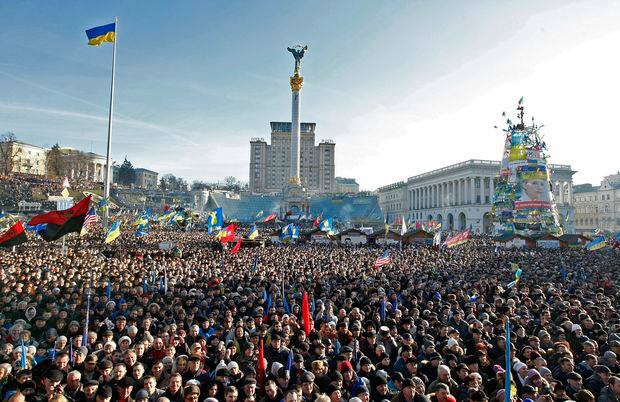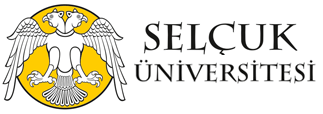The History of The UNCOS “Pagan” Hekate Memorial Los Angeles.
Excerpt warning: contains explicit links:
The History of The UNCOS “Pagan” Hekate Memorial Los Angeles 40+ years ago. The internationally recognized original UNCOS Hekate Memorial Los Angeles (@the_hekate) started as the Ukrainian National Holocaust Memorial Church Coalition Los Angeles and San Francisco. (a Pagan led United States of America Council) in exile under the USSR over 40- 50 years ago. This was done to represent the living survivors and the remnants of the Ukrainian and other national holocaust resistance shrines, sanctuaries, churches, the living and the dead in World War Two. The ancient Hekate sanctuary was chosen as the temple because it was perhaps older than the Titans (3–5000 BCE)
This was only 15-20 years after World War II when Greek Orthodox, Alexandrian Coptic, Russian Orthodox and people of the Jewish faith as well as a few other religions and organizations got together and decided that they should meet together to talk about inter-church issues. Due to the fact that in the Soviet Union the only religion was the state everyone agreed that the Church to head it up was the pagan church council. This was a LA and San Francisco Church Coalition or Council that was based loosely on supporting holocaust families in Los Angeles and San Francisco as well as social and cultural support in general. The “un named pagan church” (the name always changed for security reasons or it was called “the church with no name”) (*) was chosen to head it as it was recognizably famous and seemingly atheist or without god—they were the religion neutral national resistance church. It was organized and headed by a famous author and his family as well as other families across the United States of America. They had a newsletter and it was safe to meet with them in public without physical danger from the terrorists. (White supremacists, Racists and Nazi’s)
They represented the resistance not the terror, and would not totally trust the “other christians” ever again.
Catholic involvement was only with the California Mission System San Gabriel not the archdiocese, they did coordinate during the LA Riots, and afterwards asked for advice in special circumstances. The San Gabriel Mission is the base from which the pueblo became the city of Los Angeles. Land rights flow from the indigenous population through the mission system, Spanish colonial rule, mexico and finally the United States of America. It was and is impossible for the Catholics in California to not recognize the LACOS or UNCOS. Title to land ownership and recognizing international canon law is the issue. Los Angeles became a international city with multiple consulates due to everyone’s efforts at understanding and implementing the social program messages. (1)
The Ukraine was chosen to be the Non-Jewish Los Angeles memorial because in addition to the 1 million Jewish people, 3 million more civilians who might have practiced a dual belief system (2) were murdered systematically in the Nazi final solution during the years 1941 to 1943. Two million people were executed a year in addition to the civilian and military war dead. The Nazi’s stated written objective was wholesale population reduction in the occupied areas. The Ukraine general population was supposed to be reduced 60% by special groups of executioners the Einsatzgruppen, the Order Police battalions, and local Nazi collaborators. According to the Nazi records they achieved greater than a 50% reduction in two years.
With the loss of over half of the countries population to killings by Germans —the majority of them who were christian on both sides of the killing— everyone realized that perhaps preserving and reconstructing the original indigenous religions to demonstrate the common elements of culture across borders was a national consideration for multiple nations in Europe and around the world. These days I am heartened by Egypt spending money on preserving it’s Jewish Heritage sites especially in Alexandria. (Link 2) Why not, it’s a non-christian heritage site and the Egyptian government and the people are making a real cultural effort gesture on behalf of visitors from around the world. Someday maybe UNESCO will spend money on pagan sites as well. Turkish Universities are going to commence another archaeological dig at Hekate’s sanctuary in Anatolia Turkey very soon also. Things are moving forward again.
People were looking for answers to why it happened. How did the mass murder happen. Was it a disease? Was the answer lying dormant in some esoteric or “occulted or occluded” regional religion? What were the Nazi’s really after? What made them believe in Hitler? 40 million of them were Protestant 20 million were Catholic Christians in 1933. A full two thirds + (85%) of them were christians 60 million Germans out of 70 million in 1940. (rough numbers) Think about that for a minute, why would those Christians do that to other Christians. The majority of the people killing Christians were “the other” Christians.
That is not the total loss of people in the Ukraine during WWII, these are the numbers for 1941 through 1943 from Nazi German records:
The population of the Reichskommissariat Ukraine taken by census was 37,000,000 in 1941 and 16,910,008 in 1943 for a total of 20.1 million people killed. The Soviet census of just the Ukraine in 1939 was 30.96 million. We have no census data following the war. The German administrative district included adjacent areas of Belarus and the Second Polish Republic.
From the Ministry of Foreign Affairs of Ukraine:
The general demographic loss of Ukraine including those killed; deported, evacuated, the victims of concentration camps, and those who went into exile along with the retreating Nazis add up to at least 14 million people. This is the greatest single loss compared with the losses of other countries and nations in World War II. The USSR lost about 26.6 million lives in World War II. In comparison, the total losses in Germany were about 6 million. In fact, the total Ukrainian losses likely vary between 40 to 44 percent of the total casualties of the USSR.
Notes:
(1) Safe Passage, Sanctuary and Safe Surrender were the official social program messages and were directly based on the Ukrainian holocaust experiences. Today they are publicly slightly different than the original program messages. One example is this statement: Police can not enter churches <–this was the original issue in the United States of America especially in California where secularization (taking church land) of the Catholic mission lands by Mexico was the original issue. Freedom of Religion and the Separation of Church and State means that the police cannot raid or drag people out of church for civil law enforcement actions.
(2) Dual belief system refers to a practice of having two belief systems.
The official church of the state. Usually this was what the King practiced or what kind of prayers were said at state functions (if any)
The private religion your family practices i.e., which god or goddess your house follows. Which is your home temple was a usual question.
Wikipedia sheds some light on the twin faith issue here:
https://en.wikipedia.org/wiki/Slavic_paganism
The Christianisation of the Slavic peoples was, however, a slow and—in many cases—superficial phenomenon, especially in what is today Russia. Christianisation was vigorous in western and central parts of what is today Ukraine, as they were closer to the capital Kiev, but even there, popular resistance led by volkhvs, pagan priests or shamans, recurred periodically for centuries.[2] Even though the Byzantine Christianization firstly has slowed down the Eastern Slavic traditions in Rus’, it has preserved the Slavic traditions in the long term. While local Slavic figures and myths, such as Baba Roga in Croatia were forgotten,[4] Slavic culture continued to exist and even flourish in the Eastern Slavic countries. In the case of a Christian Latinization of the Eastern Slavic countries, this may not have been the case.
–end–
Please stop copy pasting for dark social here.

After this is a personal note to my two biological sister(s) and maybe a brother who I have not seen in 10 years now. Go ahead and please use this image:
(*) (Double edged sword, yes I see the double edged sword Z, nice choice but I wanted to make you one when I grew up.)



Image and story from Euromaidan Press
[ED: These two tanks (Russian and Ukrainian) did not shoot at each other in 2014 but rammed each other,.. both reactive armor systems exploded.]
http://euromaidanpress.com/2019/02/18/russian-war-with-ukraine-a-clash-of-civilizations-ikhlov-says/
Artist: Rado Javor Link 2 Link 3
Interesting:
http://euromaidanpress.com/2015/09/09/for-russians-ukraine-is-a-south-korea-to-russias-north-zhordan-says/
https://medium.com/practice-of-history-2018/euromaidan-social-media-in-the-revolution-of-dignity-142084c30202

–https://medium.com/practice-of-history-2018/euromaidan-social-media-in-the-revolution-of-dignity-142084c30202
Featured image is from:
https://pxhere.com/en/photo/591272
License:
https://pxhere.com/en/license












